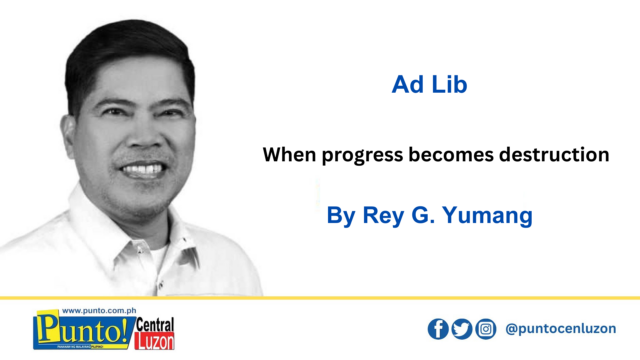DEVELOPMENT SHOULD never be built at the expense of the environment. Yet in the Philippines, this fundamental truth is repeatedly ignored until disaster strikes and lives are lost.
For years, local communities and indigenous peoples have sounded the alarm about carving roads, subdivisions, and commercial estates into unstable hillsides and protected forests. Instead of listening, government agencies and powerful developers brushed aside their warnings in favor of progress and investment. But more often than not, what we call progress ends up looking like destruction.
American economist Herman Daly, pioneer of ecological economics, reminds us that a nation’s economy is not separate from nature but is contained within it. According to Daly, true development does not mean getting bigger but getting better. When growth surpasses ecological limits, it stops being development and becomes damage. We are now living in the consequences of that damage.
The Cebu landslide linked to the Monterrazas project is only the latest example of growth imposed on landscapes not meant to carry such weight. We cannot claim to be shocked because we have seen this pattern many times but chose to look the other way.
The construction of the New Manila International Airport has worsened flooding across Bulacan and Pampanga. Wetlands, considered to be nature’s sponge, were reclaimed and paved over. Water that once seeped slowly into marshland now rushes into homes and fields. Families who once farmed those fertile plains now watch their land drown each year.
The aggressive conversion of agricultural and forest land into commercial estates and golf courses particularly by the Villar empire deepens the crisis. Not-so-fun-fact: a single 18-hole golf course consumes 1.5 to 3 million liters of water per day while nearby communities endure water shortages. Food-producing farms are erased, biodiversity disappears, and water tables shrink. The end result? To benefit the leisure of the few at the cost of the survival of the many.
Then there is the Kaliwa Dam, which threatens the Sierra Madre, the last great mountain barrier shielding Luzon from the full wrath of Pacific typhoons. To damage that shield is to invite disaster. It puts indigenous communities, millions of downstream residents, and the country’s climate defense at risk.
We have already witnessed how ecological destruction turns natural storms into mass tragedies: Sendong (2011), Yolanda (2013), Ondoy (2009), Ulysses (2020). These were not “acts of God.” They were consequences of deforestation, mining, and irresponsible land use.
Let us be clear. These are not natural disasters; they are policy disasters and economic choices.
We are often praised for our resilience. But let us be honest. Resilience is not a badge of honor but an evidence of how much we are forced to endure. We should not be admired for rebuilding again and again. We should be outraged that we are made to.
If we continue choosing profit over planet, we are not building progress. We are preparing the next tragedy.
And the mountains, rivers, and seas will not stay silent. If we do not finally learn now, their next warning will not be gentle.





